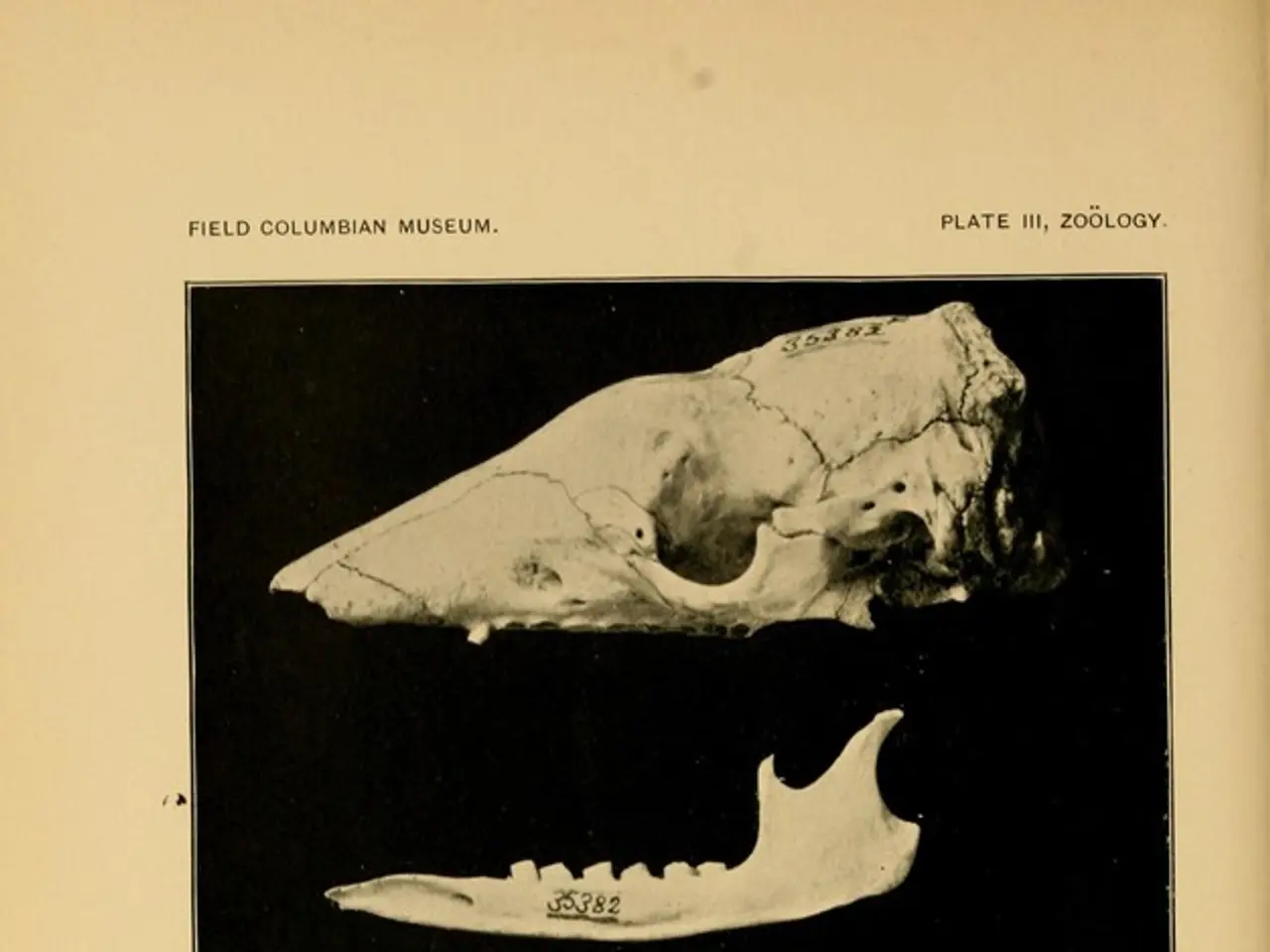Osteoarthritis: Understanding its origins, manifestations, and remedies
Osteoarthritis (OA), often referred to as wear and tear arthritis, is a common joint condition affecting millions worldwide. Symptoms include pain and stiffness in the back or neck, and crunching or grinding noises when moving the back or neck. Although there is no definitive test to diagnose OA, doctors typically ask about symptoms and perform a physical examination, supported by tests such as X-rays, MRI scans, joint fluid analysis, blood tests, and ultrasound to reveal damage and rule out other causes.
The management of OA focuses on reducing pain, improving joint mobility, and slowing progression through a comprehensive approach that combines non-surgical and surgical treatment options, tailored to the severity of the condition and individual patient needs.
Weight loss is a significant factor in reducing stress on weight-bearing joints such as the knee, helping to reduce pain and slow disease progression. Activity modification is also crucial, with high-impact activities that exacerbate joint damage being avoided, and low-impact exercises recommended instead.
Physical therapy and exercise play a vital role in OA management. Strengthening muscles around affected joints improves joint stability and reduces pain. Low-impact aerobic exercises, such as swimming, cycling, walking, and hydrotherapy, maintain joint mobility without overloading joints. Flexibility and stretching routines, like yoga, tai chi, and gentle stretching, improve range of motion and reduce stiffness.
Pharmacological management includes over-the-counter medications like ibuprofen and naproxen, which reduce inflammation and pain, and acetaminophen for mild pain but without targeting inflammation. Corticosteroid injections, viscosupplementation injections, and topical treatments such as creams with capsaicin may also provide symptom relief.
Assistive devices, such as braces, canes, and shoe inserts, offer physical support and offload stress from affected joints, improving function and reducing pain. In severe cases, joint replacement surgery, considered the gold standard, may be considered when conservative measures fail, especially in advanced joint degeneration.
Alternative therapies, such as acupuncture and supplements like glucosamine and chondroitin, may benefit some patients, although evidence varies.
It is essential to note that there is currently no cure for OA. However, treatment can help manage pain and swelling, keeping a person mobile and active. OA can affect various parts of the body, including the knees, hips, hands, lower back, and neck.
Bone spurs or osteophytes can form on the joints in people with OA, and symptoms typically appear in people over 50. OA in the neck results from the degeneration of joints, vertebrae, and spinal discs, causing pain, stiffness, and inflammation.
In summary, a multidisciplinary approach emphasising weight management, physical therapy, medications, and mechanical support offers the best chance of reducing pain, improving joint mobility, and slowing the progression of OA. Surgery is reserved for advanced cases.
- In the workplace-wellness context, understanding and addressing the implications of various medical-conditions, including obesity, diabetes, and autoimmune-disorders, contributes significantly to overall employee health and wellness.
- Science has made strides in predictive models for chronic-diseases like type-2-diabetes and chronic-kidney-disease, enabling earlier interventions and better management.
- Atopic dermatitis, a common skin-condition, can coexist with autoimmune-disorders, requiring therapies-and-treatments tailored to individual cases.
- Aq, a small desert town, experiences high temperatures due to climate-change, leading to a heightened risk of heat-related health issues and skin-care concerns.
- Mental-health, often overlooked, plays a critical role in managing all chronic-diseases, including respiratory-conditions, digestive-health issues, and eye-health problems.
- Hearing loss, a concern for many, can be managed with a combination of therapies, treatments, and lifestyle adjustments, including nutrition and weight-management.
- Health-and-wellness industry invests in research and innovation, exploring the benefits of CBD in managing various medical-conditions and promoting fitness-and-exercise.
- Environmental-science emphasizes the relationship between weather patterns and environmental factors, like air quality, and the incidence of brain fog, asthma, and allergies.
- Finance plays a crucial role in health-and-wellness, as personal-finance concerns can impact lifestyle choices that affect one's physical health.
- Business leaders recognize the importance of workplace-wellness programs, understanding that employee well-being improves productivity and workplace morale.
- Managing obesity through weight-management and fitness-and-exercise can preemptively address other joint pain conditions, such as otherjointpain and otherpain, including knee pain.
- Spondylitis, an inflammatory autoimmune-disorder affecting the spine, is often associated with psoriatic arthritis and ankylosing spondylitis.
- In the realm of science, understanding the environmental factors that contribute to joint pain, like weather changes and air quality, is a growing area of scientific inquiry.
- CBD, derived from the hemp plant, has shown promise in managing various chronic-diseases and autoimmune-disorders, such as diabetes and psoriasis.
- In the space-and-astronomy field, understanding the effects of zero gravity on joint health and the human body as a whole is a significant area of research.
- Cybersecurity, while not directly linked to health-and-wellness, plays a role in protecting sensitive medical data, ensuring patient privacy and data security.
- Lifestyle choices, such as diet, exercise, and stress management, significantly impact respiratory-conditions and digestive-health.
- Skin-care is a crucial aspect of personal hygiene and health maintenance, addressing conditions like atopic dermatitis, psoriasis, and other skin-conditions.
- In the realm of finance, investment in companies that focus on health-and-wellness, environmental-science, and technology can be a strategic choice for wealth-management.
- Maintaining eye-health involves regular check-ups and healthy habits, such as avoiding screen time and eating a balanced diet.
- Hearing aids and other assistive devices can improve quality of life for those dealing with hearing loss or other health-related challenges.
- In the field of agriculture, understanding the effect of climate-change on food-and-drink production and nutrition is crucial for sustaining the global population.
- Green residences and home-and-garden practices can contribute to environmental sustainability, reducing the impact of climate-change on health and overall well-being.
- Investing in businesses that prioritize psychological well-being, mental-health services, and holistic health approaches can lead to long-term benefits for both businesses and individuals.
- Regular exercise, a key component of fitness-and-exercise, can help manage symptoms of mental-health conditions like depression and anxiety.
- With the rise of electric-vehicles, concerns about air pollution and its impact on respiratory-health and other chronic-diseases are being addressed.
- In the realm of real-estate, investing in properties that offer amenities supporting health-and-wellness, such as gyms and green spaces, can attract health-conscious buyers.
- Gadgets like fitness trackers and smartwatches can help individuals monitor their health, promoting a proactive approach to wellness.
- Data-and-cloud-computing tools enable healthcare providers to store and analyze vast amounts of patient data, supporting better diagnosis and treatment for various medical-conditions.
- Artificial-intelligence is being employed in the diagnosis and treatment of chronic-diseases, offering more accurate and efficient care.
- Relationships, whether romantic or platonic, can impact mental-health and overall well-being, highlighting the importance of emotional support in health management.
- Pets, particularly dogs and cats, provide companionship and stress relief, contributing positively to mental-health and overall well-being.
- Travel, whether for leisure or work, can expose individuals to new cultures, environments, and potential health risks, making it essential to maintain good health practices during journeys.
- Maintaining a well-maintained car can reduce stress and promote safe driving conditions, impacting mental-health and overall well-being.
- Cultural influences, including the adoption of pop-culture, books, movies, TV shows, and social-media platforms, can shape health-related habits and attitudes, influencing health-and-wellness decisions on a global scale.




